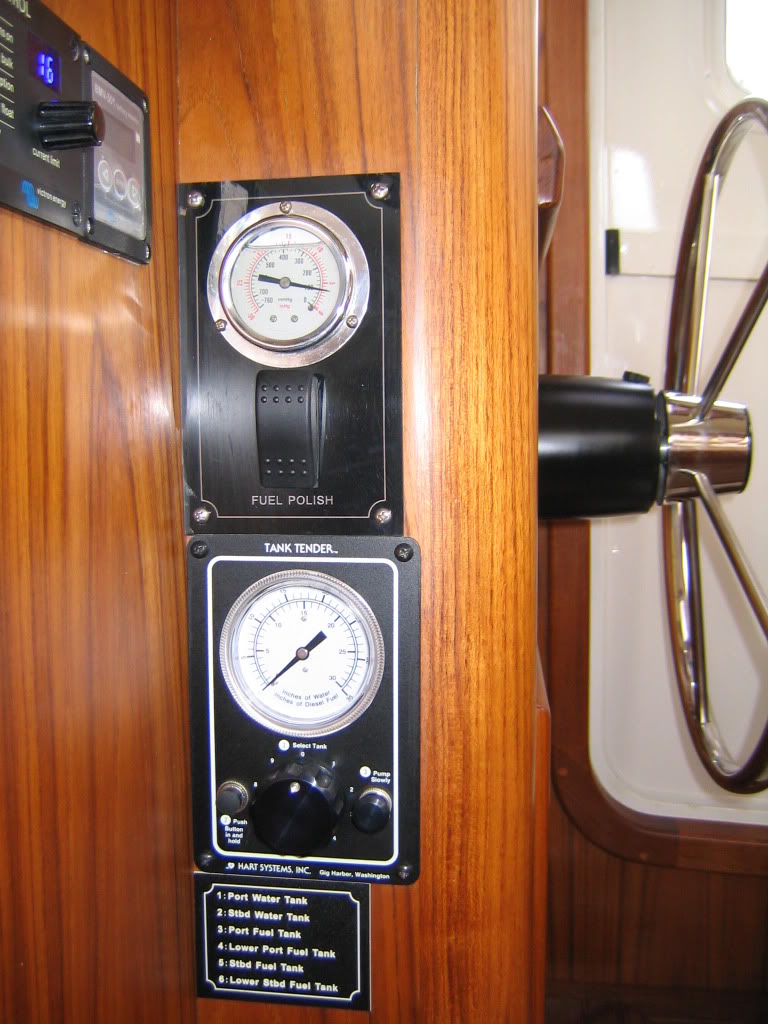I have a 56' displacement hull cruiser, don't really know if it could be considered a trawler, more of a cruiser I guess but 8knts is a happy and economical pace. Just rebuilt the twin 6-71's from 1948!
When I first brought her up from Tocama to Seattle I lost both motors from fuel contamination and found myself adrift in the shipping lanes and was not terribly happy about that. Two days later my Dodge diesel truck lost power from a plugged filter. Now this truck will tell me if a door is not shut, if a license plate light is out, if it is below freezing or if any of the gauges is out of range, but nothing about the condition of the fuel filter until it is plugged and the motor dies taking with it the power brakes and steering, not unlike my boat which lost the ability to manuver and to stop.
I decided to sort the issue out and designed a filter which fits between the fuel tank and the on-board filtration on the engine (as not to void warranty), all fuel going to the engine passes through this filter and the filter is monitored by a computer built into a standard 2 1/16" gauge in the wheel house or on the dash of a truck. If the computer detects water in the fuel or high vacuum indicating a plugged filter, it automatically bypasses the filter and sounds a 90db alarm and lights an indicator telling you that you have either water in fuel or high vacuum and that the filter has bypasses and now you have only your stock on-board filtration. There is a button on the gauge allowing you to silence the alarm but the filter remains locked out until it is serviced and the fault remedied.
What I am asking here is if this seems like something that would be of interest to the trawler market and if there are any additional features that would be desired. I filed a patent on the system in January and have had a lot of interest from trucking companies and stationary generator companies but really designed it for marine use.
Any thought greatly appreciated.
When I first brought her up from Tocama to Seattle I lost both motors from fuel contamination and found myself adrift in the shipping lanes and was not terribly happy about that. Two days later my Dodge diesel truck lost power from a plugged filter. Now this truck will tell me if a door is not shut, if a license plate light is out, if it is below freezing or if any of the gauges is out of range, but nothing about the condition of the fuel filter until it is plugged and the motor dies taking with it the power brakes and steering, not unlike my boat which lost the ability to manuver and to stop.
I decided to sort the issue out and designed a filter which fits between the fuel tank and the on-board filtration on the engine (as not to void warranty), all fuel going to the engine passes through this filter and the filter is monitored by a computer built into a standard 2 1/16" gauge in the wheel house or on the dash of a truck. If the computer detects water in the fuel or high vacuum indicating a plugged filter, it automatically bypasses the filter and sounds a 90db alarm and lights an indicator telling you that you have either water in fuel or high vacuum and that the filter has bypasses and now you have only your stock on-board filtration. There is a button on the gauge allowing you to silence the alarm but the filter remains locked out until it is serviced and the fault remedied.
What I am asking here is if this seems like something that would be of interest to the trawler market and if there are any additional features that would be desired. I filed a patent on the system in January and have had a lot of interest from trucking companies and stationary generator companies but really designed it for marine use.
Any thought greatly appreciated.










